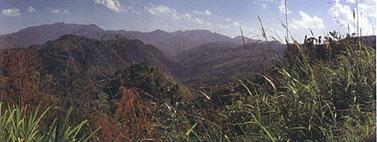MANIPUR

Ninety per cent of this land is made up of hills which surround the small but fertile Manipur Valley placed almost at the centre. While there are a number of rivers criss-crossing the valley, the famous Loktak lake (along with some other smaller lakes) has its own importance in various ways - topographic, economic, social, and cultural.
Manipur has a population of 1,826,714 (1991 census) of which two thirds live in the valley and the rest in the hills. The valley is inhabited almost entirely by the Manipuris (who also call themselves Meiteis), while thehills are the abode of as many as 29 tribes, mostly of Naga and Kuki stocks.
The Meiteis have been the politically and socially dominant group in the land throughout known history. Originally different Meitei families held sway over different parts of Manipur but at one time one single ruling dynasty established its paramountcy.
Manipur has always had close links with Upper Burma, its closest neighbour on the east, and also some connection with China, one of the routes between India and China having been through Manipur. There have also been close historical and cultural ties between Manipur and Assam.
• The people and the landscape
• Lai haroba dance ritual
• Ima Market at Imphal
• Loktak Lake
• The hill regions (Kabui, Senapati, Ukhrul)
All these highlights and more are the subject of two books by Peter van Ham:
THE SEVEN SISTERS OF INDIA
Tribal Worlds Between Tibet And Burma
THE HiDDEN WORLD OF THE NAGA
Living Traditions In Northeast India And Burma
ARUNACHAL PRADESH, NAGALAND, ASSAM, MIZORAM, TRIPURA, MEGHALAYA,
Christoph von Fuerer-Haimendorf
& Verrier Elwin